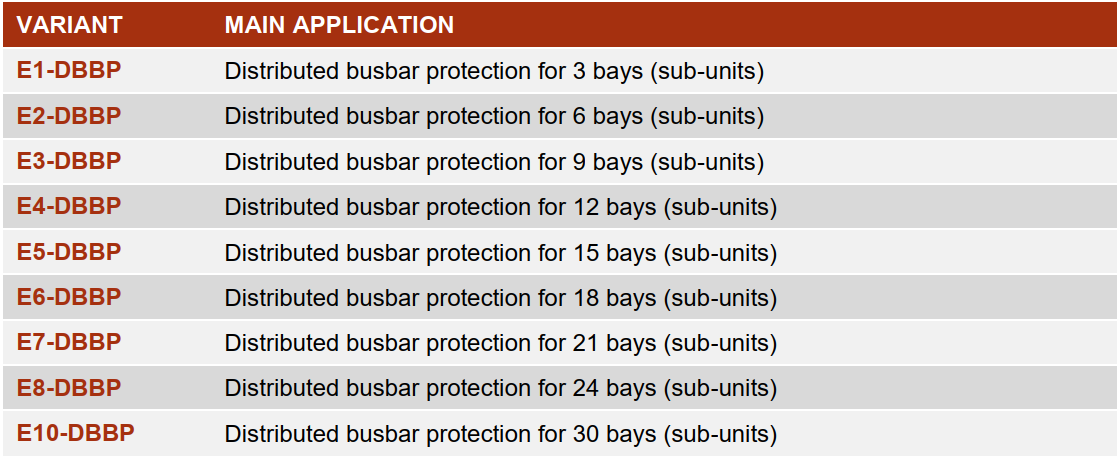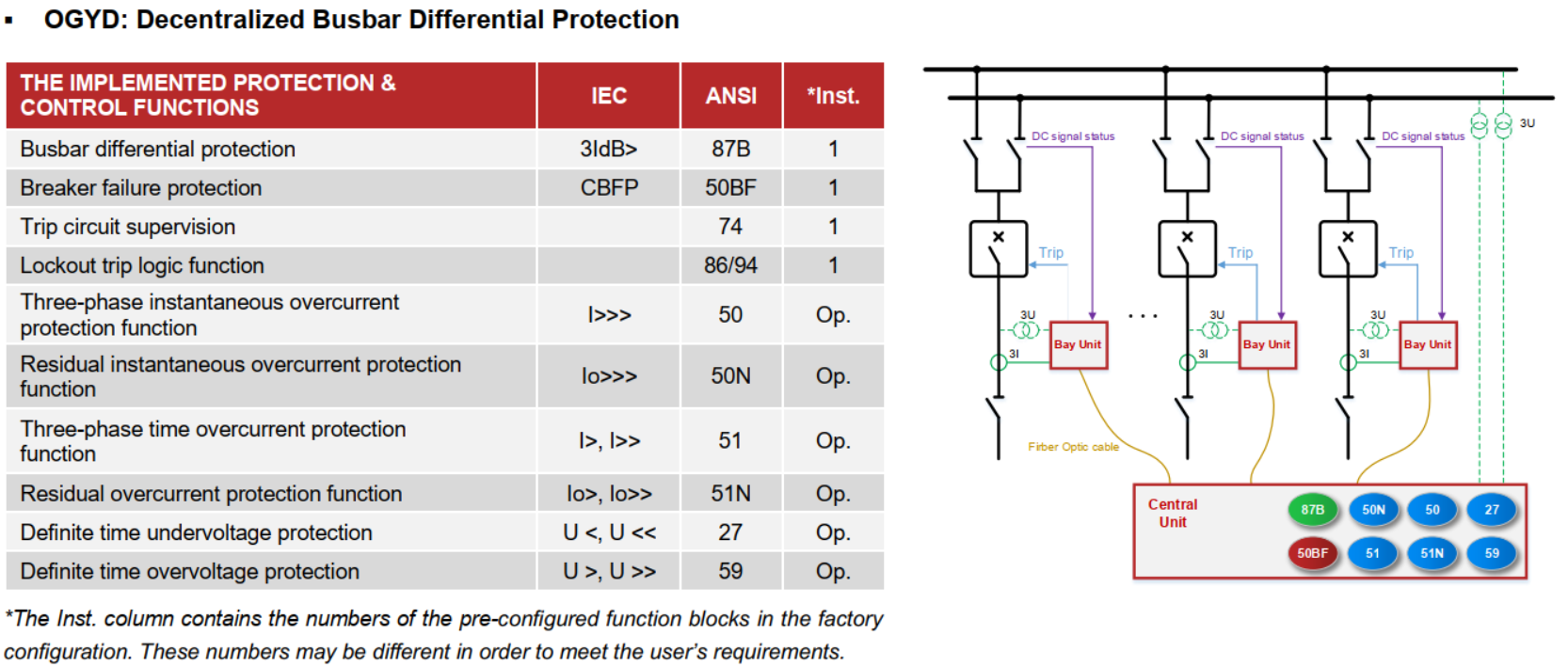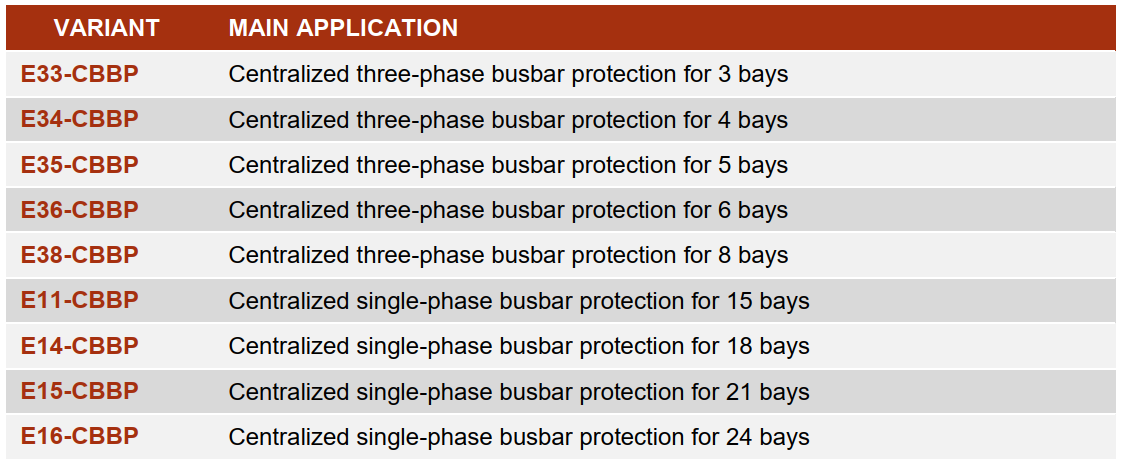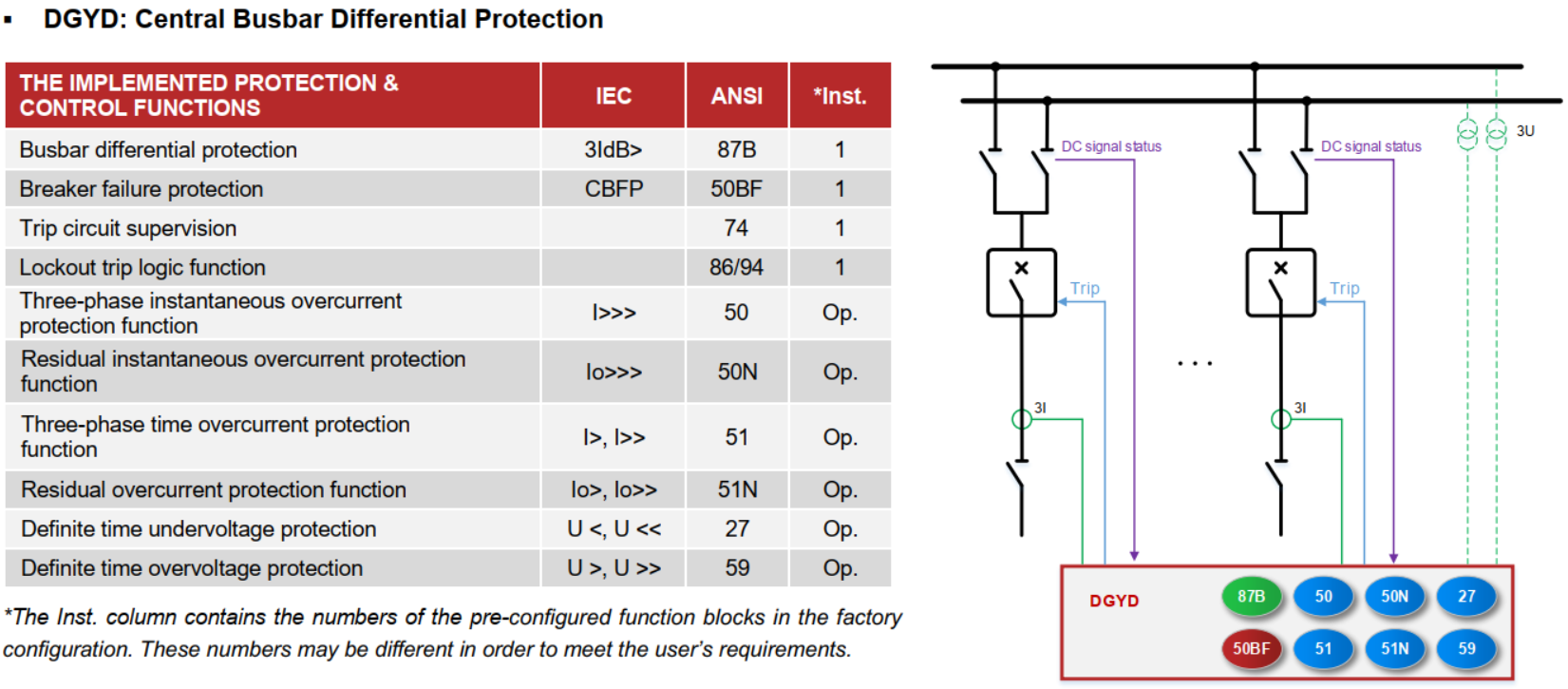♦ All members of the decentralized OGYD type have the same functionality: the low impedance distributed busbar protection. The difference between them is in the number of the protected sub-units (i.e. the number of the COM modules that communicate with the bay units). The currently available configurations of the OGYD type are listed in the table below (the list may grow over time).


♦ There are two groups of members in the DGYD type, all of them realizing low impedance centralized busbar protection. The first of them handles all three phases of each protected bay (name starting with ‘E3’, see below). The second group has the same functionality, but here one device handles only one phase of each bay (name starting with ‘E1’). This way more bays can be handled with centralized busbar protection function. This also means that to handle all three phases will require three devices. The difference between each member is the number of the handled bays (i.e. the number of the contained CT inputs for the bays). The available configurations of the DGYD type are listed in the table below (the list may grow over time).

